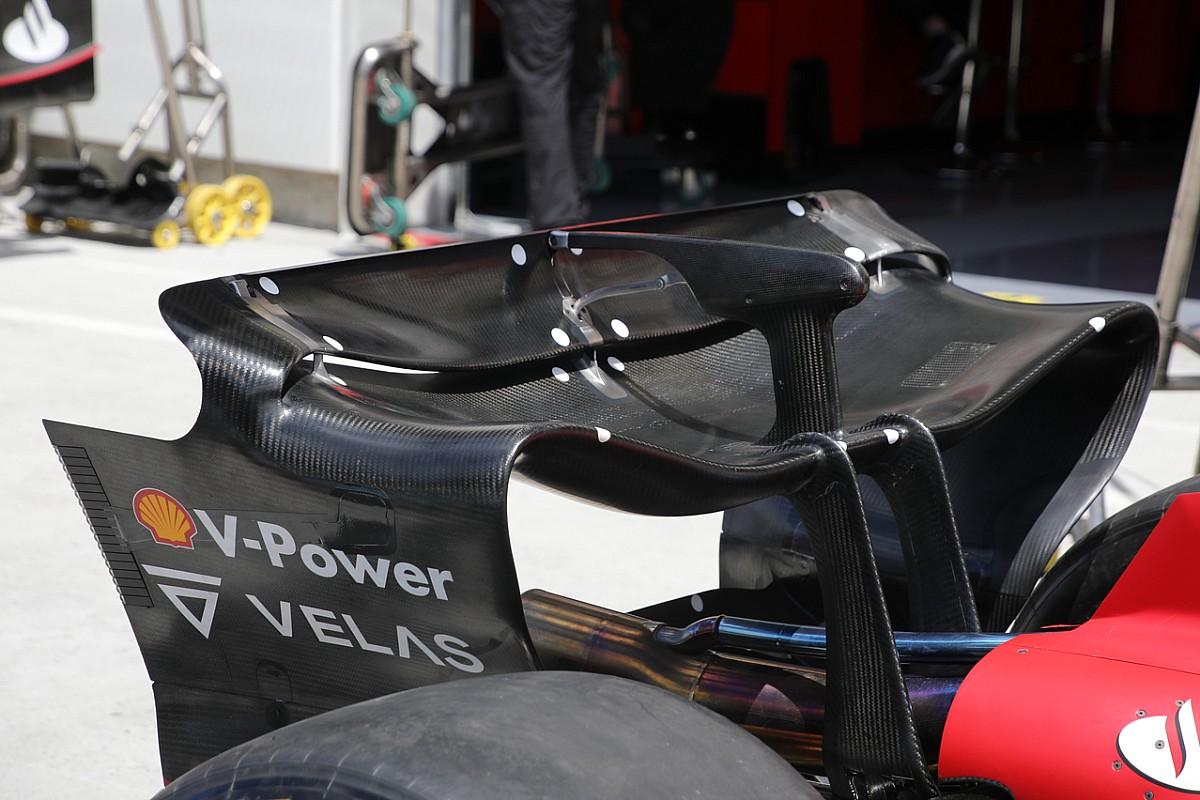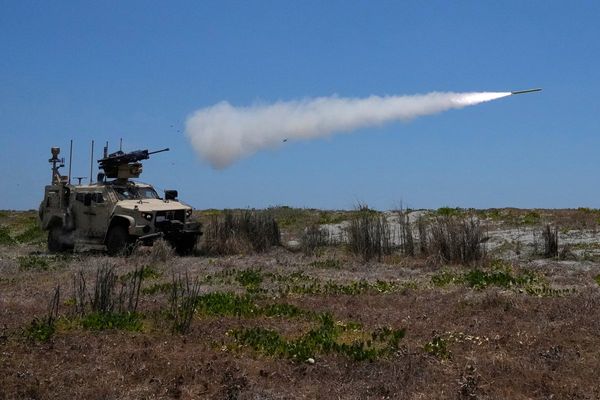
Unsurprisingly, given the logistical challenges involved, there’s not a huge quantity of F1 upgrades on display this weekend.
Mercedes is sporting the most substantial package of parts, as it continues to search for ways to dampen the porpoising issues that it currently faces.
Ferrari, as we can see in the main image above, has focused attention on aerodynamic efficiency, with changes being made to both the upper elements of the rear wing and the beam wing in order that they work together to reduce drag, without compromising on downforce.

McLaren has also made changes to its rear wing assembly for Canada, as it eyes efficiency gains that will also pay off when the wing is employed at other race venues later in the season.
The new specification spoon-shaped rear wing can be seen (above) with flo-viz paint sprayed on it, in order to determine whether it’s performing as the CFD and windtunnel tools suggest.
Having used an additional metal stay to combat floor flex since the Miami Grand Prix, McLaren made further changes in Canada to help improve reliability and stiffness. The bracket (below) is now mounted further inboard (old position, red arrow and inset) to adjust how the load pulls on the metal stay.
Also note that there’s a lot of metalwork embedded within the edge of the floor's surfaces, to help create more predictable conditions, which is something that’s become a common theme for McLaren in recent years.

Alpine has also made changes to the rear wing, returning to a higher downforce configuration than the one raced in Azerbaijan. Having also introduced the stacked beam wing configuration with that lower downforce specification wing, the team has made the switch to that layout with its higher downforce configuration now too.
The solution (below), which bears a significant resemblance to the one raced by Red Bull since the start of the season, sees the elements angled upwards more abruptly to match the downforce level of the wing.

Over at Aston Martin it’s much the same approach, as the AMR22 has received a new upper flap for its rear wing (below) to increase downforce without a significant drag penalty.
The flap is more heavily cambered in the central section of the wing, giving the impression that the flap is taller in that section than the outer portion but you can see the geometrical adjustment across the central span of the rear wing’s sponsor.


Red Bull, AlphaTauri, Williams, Alfa Romeo and Haas all declared that they had no new aerodynamic components at their disposal this weekend when submitting updates for the car presentation document ahead of the event.







